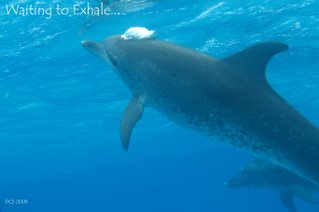Assuming you have saved enough of your hard earned money that you are considering getting into Scuba and buying your gear, the first purchase is typically Mask, Fins and Snorkel. This is the basic staple of dive gear, and many times is a required purchase as part of Basic Open Water Scuba Certification. If you have been diving awhile, you may want to skip this post since it is a basic overview of this equipment intended for the new Diver.
With Dive Masks, these should be purchased from a quality scuba equipment manufacturer, and you should avoid purchases from your local discount stores. The mask should fit comfortably to the shape of your face. Many masks also have prescription lenses that can be fitted, or "
Gauge Reader" lenses that allow magnification of the lower portion of the lens
similar to a bifocal. With the Dive Mask, the major option today is purge vs. non-purge. The purge valve is a small device located below the nose with a one-way valve that allows the diver to clear the water from his/her mask without tipping the mask away from the face. Although these masks are popular for the recreational diver, this purge valve does pose a possible failure point. As a personal note, one of my first masks was a purge mask, and due to the shape of my nose, the valve rubbed the bottom of my nose raw. On repetitive dives, this became very irritating and before long I purchased a non-purge mask. Look for a comfortable low-volume mask that allows rapid clearing.
The major Fin options are either full foot or strap-on fins. Full foot fins provide less water resistance, and are preferred for warm water diving where the shore entry is relatively smooth. The advantage of these fins is that they do not require wetsuit boots. Wetsuit Boots have soles similar to tennis shoes that can aid in a rocky shore entry situation where bare feet may pose some risk to injury. After the boot is put on, the fins are secured to the feet using adjustable rubber straps.
The next big discussion with fins is the split fin debate. If you are interested in researching this topic further, please see some of the fin reviews in
Scuba Diving Magazine or search Google for more details. Personally, I find that Split Fins provide better "top end" speed, but suffer in slow speed
maneuverability. I own 2 sets of fins, a pair of
Scubapro Twin Jets, and also a pair of
Scubapro Jet Fins (both in black). Both pair are the strap-on style fitted with Spring Straps for easy of donning/doffing.
Finally, the snorkel is a very useful device for surface swimming, and conservation of air in your tank. These typically have a flexible lower section to allow head movement, and most have a very convenient purge at the base to assist in removing water from the snorkel before use. As divers become more experienced, the snokel typically gets relegated to the gear bag and not used. I personally carry a small flexible roll-up snorkel in my BC Pocket on all my dives.
The colors of gear is only limited to your imagination, and a great way to make a fashion statement.
Although this first gear post is very basic, I hope that you have found it useful.
Dive Safe.


